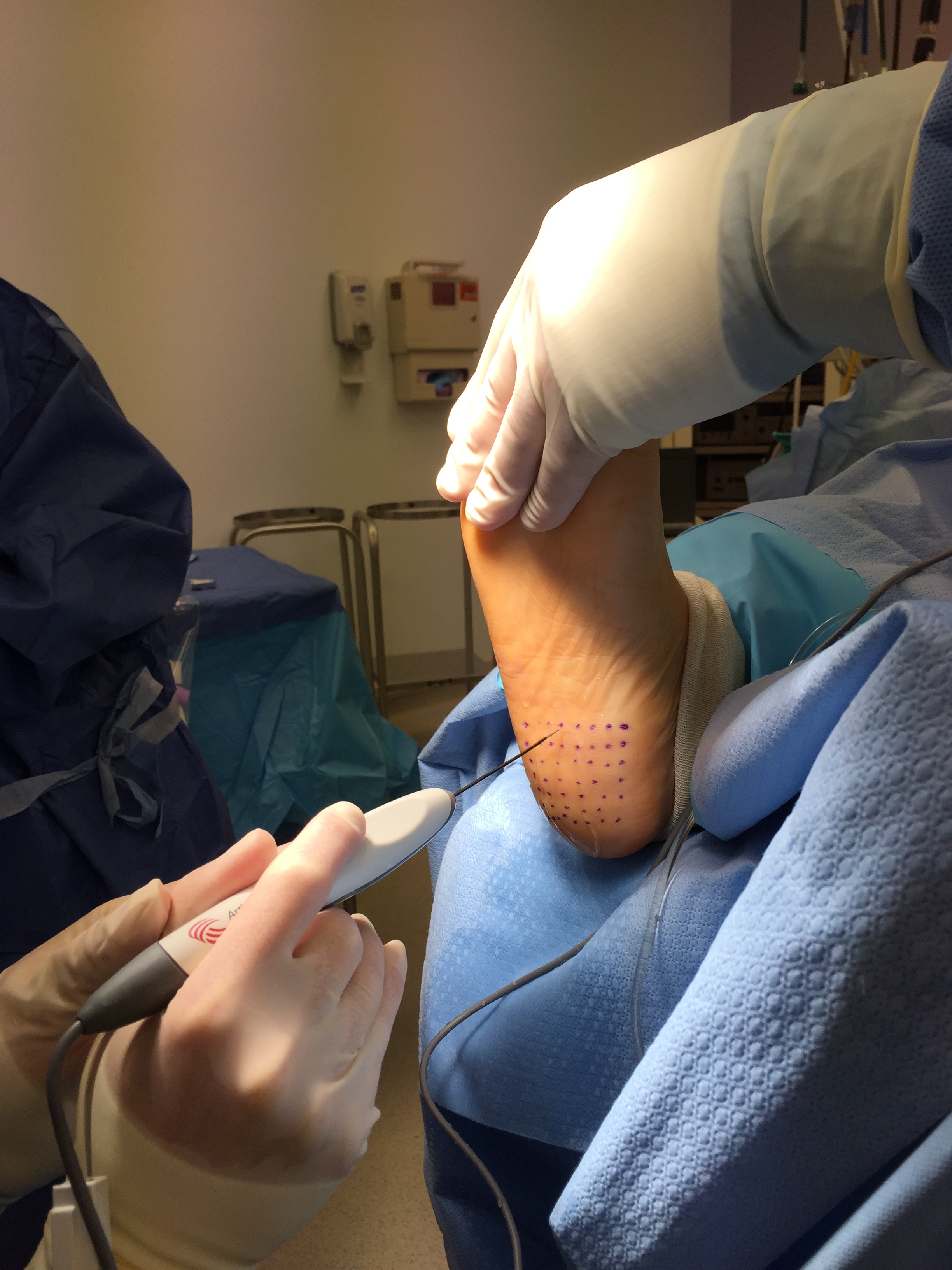Heel Pain Treatment
Heel pain can be caused by several different conditions, including nerve entrapment, fracture, growing pains, Achilles tendonitis, and bursitis; but most commonly it is caused by plantar fasciitis. See the Conditions section of our website for definitions of these conditions. Thankfully, you don’t have to suffer from heel pain thanks to our team at Alpine Foot Specialists.
What is Plantar Fasciitis?
There is a thick band of tissue that runs across the bottom of your foot, connecting your heel bone to your toes. If this band becomes inflamed or irritated, it will create a stabbing pain in your heel. This pain may be worse in the morning.
How Our Team Can Help
Our podiatrists will examine your feet and likely take x-rays to identify your specific condition. Occasionally, an MRI is ordered to provide more detailed imaging of your foot and ankle. Conservative (non-surgical) treatment for heel pain often includes stretching, appropriate shoe gear, icing, anti-inflammatories, custom orthotics, avoiding barefoot walking, night splints, physical therapy, steroid injections and/or MLS laser therapy. If conservative treatment fails or is deemed inappropriate for your condition, then surgical options are discussed.
If you have heel pain, don’t put it off any longer. You don’t have to suffer every time that you are on your feet! Call us today to make an appointment so we can get you back to a pain-free, enjoyable life!
TOPAZ Radiofrequency Ablation:
Although many people can manage their heel pain by incorporating rest, stretching, bracing, medicine or injections, some patients must undergo invasive surgical procedures with lengthy recovery periods. A revolutionary medical device called the TOPAZ MicroDebrider, is available, offering a quick, minimally invasive alternative for the treatment of tendons and fascia. This technology is rapidly being adopted by surgeons around the country specializing in sports medicine procedures. This procedure is done as an outpatient with light sedation. Recovery time is quicker than more invasive surgical procedures, averaging between one and three months. Ask your podiatrist if TOPAZ is right for you.